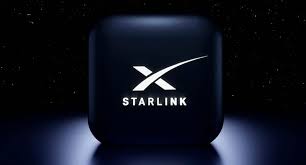US scientists on Tuesday revealed a breakthrough in fusion energy that could one day help curb climate change if companies can scale up the technology to a commercial level in the coming decades.
According to the US Energy Department, researchers at the Lawrence Livermore National Lab in California briefly increased the amount of energy in a fusion experiment on December 5 for the first time. The energy was released when two light atoms fused into a heavier one by using a laser to hit a target of fuel.
At an Energy Department conference, Lawrence Livermore director Kimberly Budil told reporters that commercialisation is probably not five or six decades away, but rather sooner. According to Budil, decades of research on the underlying technologies could prepare us to construct a power plant with focused effort and money.
Scientists have known for about a century that fusion powers the sun and have pursued developing fusion on Earth for decades.
The experiment briefly achieved what’s known as fusion ignition by generating 3.15 megajoules of energy output after the laser delivered 2.05 megajoules to the target, the Energy Department said.
When she briefly worked at Livermore as a teen in 1978, Arati Prabhakar, now the director of the White House Office of Sciences and Technology Policy, learned about the fusion experiment, she said it is a “tremendous example of what perseverance can achieve.”
According to Tony Roulstone, a nuclear energy expert at the University of Cambridge, the experiment’s energy output was only 0.5% of the energy required to initially light the lasers.
“Therefore, we can say that this result … is a success of the science – but still a long way from providing useful, abundant, clean energy,” Roulstone said. In order to become commercial, a power plant would have to produce enough energy to power the lasers and to achieve ignition continuously.
“This is one igniting capsule (of fuel) one time,” Budil said about the experiment. To realize commercial fusion energy you have to … be able to produce many, many fusion ignition events per minute.”
The electricity sector cautiously welcomed the decision but emphasised that it should not hinder work on developing other energy transitional technologies including solar and wind power, battery storage, and nuclear fission.
“It’s the first step that says ‘Yes, this is not just fantasy, this can be done, in theory,'” said Andrew Sowder, a senior technology executive at EPRI, a nonprofit energy research and development group.
Debra Callahan, who worked at Lawrence Livermore until late this year and is now a senior scientist at Focused Energy, said the lab’s results will help companies figure out how to make lasers more efficient. “Everyone is excited about what’s been achieved and what’s in the future.”
According to the Fusion Industry Association, Focused Energy is one of hundreds of companies trying to commercialise fusion energy that have raised approximately $5 billion in private and government finance, with more than $2.8 billion coming in the 12 months leading up to June of this year. Many companies, notably Commonwealth Fusion Systems, want to replace lasers with strong magnets.






